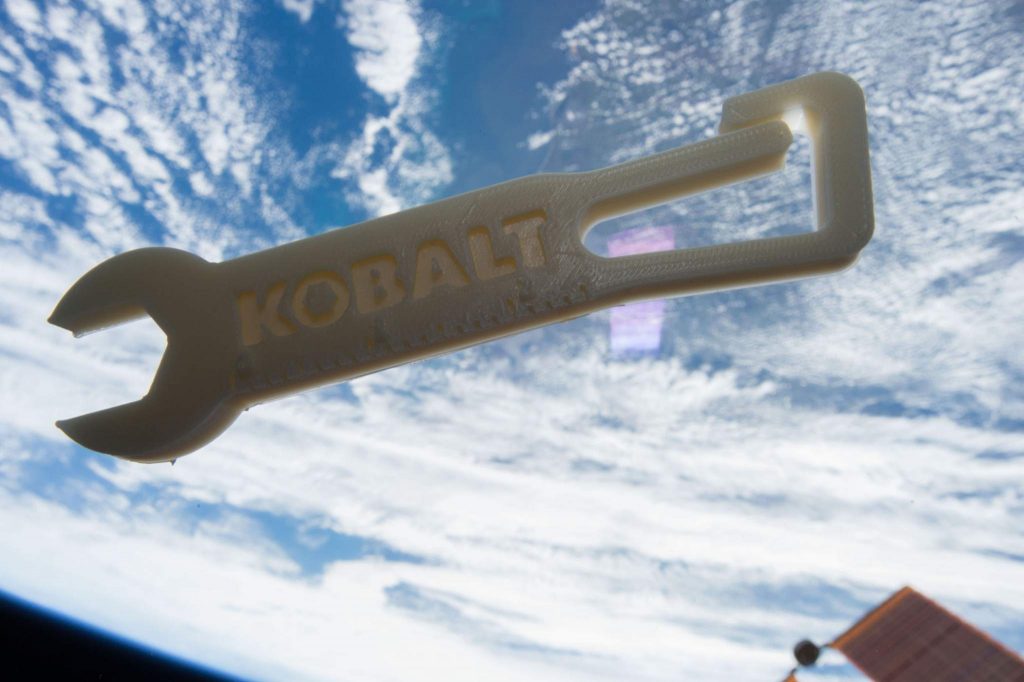Made In Space, U.S. manufacturers of the world’s first microgravity 3D printer, are celebrating a year of trailblazing firsts 3D printed on the International Space Station (ISS). As of April 2017, the company’s Additive Manufacturing Facility (AMF) has produced 39 objects including spare parts for NASA, and components for medical research.
Ongoing research into 3D printing on the ISS will aid future pioneers in further exploration of our solar system, and antigravity construction. Potential applications may even include SpaceX’s proposed colony on Mars.

To boldly go where no 3D printer has gone before
One 3D print on the ISS is an adaptor part for NASA’s Oxygen Generating System (OGS). The adaptor component demonstrates the utility of fabricating parts on demand in a location that is otherwise a logistic stretch.

So far, the largest part 3D printed on the ISS measures 10 cm x 10 cm by 14 cm. As a particular commission for NASA though, the actual object is confidential.
The 3D printer currently operates exclusively in plastics, but the hope is to one day be able to 3D print metal composites and fibrous materials in space. Matt Napoli, vice president of In-Space Operations at Made In Space says,
I’d describe our prints last year as trailblazers, since they were all made in orbit for the first time and we were exploring how best to utilize AMF. This year, we expect more advanced prints as we push the envelope of what’s possible with it. We’ve started to print in a new, space-suitable material in PEI/PC (polyetherimide/polycarbonate), giving us the capability to manufacture stronger, more heat-resistant structures.

The future of 3D printing in space
In our interview with Made in Space business development engineer Justin Kugler, we learned more about how 3D printing is advancing the space industry. Furthermore, at Defence IQ’s Additive Manufacturing for Aerospace, Defense and Space conference in London, 3D Printing Industry heard first hand how NASA is working with a variety of 3D printing techniques to enable in-space manufacturing (ISM).
To stay up to date with the latest news about 3D printing in space sign up to the 3D Printing Industry newsletter and follow our active social media channels.
Featured image shows a test of the Made In Space 3D printer inside the Microgravity Science Glovebox (MSG) Engineering Unit at Marshall Space Flight Center. Photo by NASA


